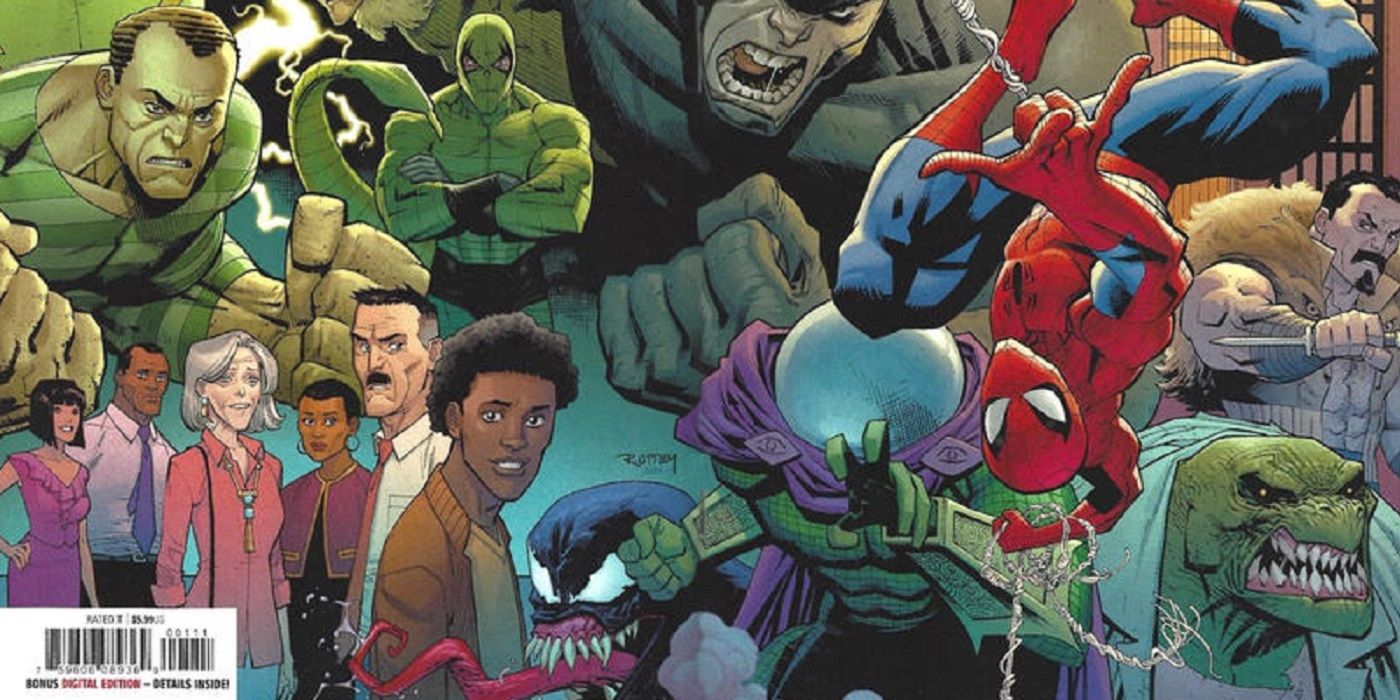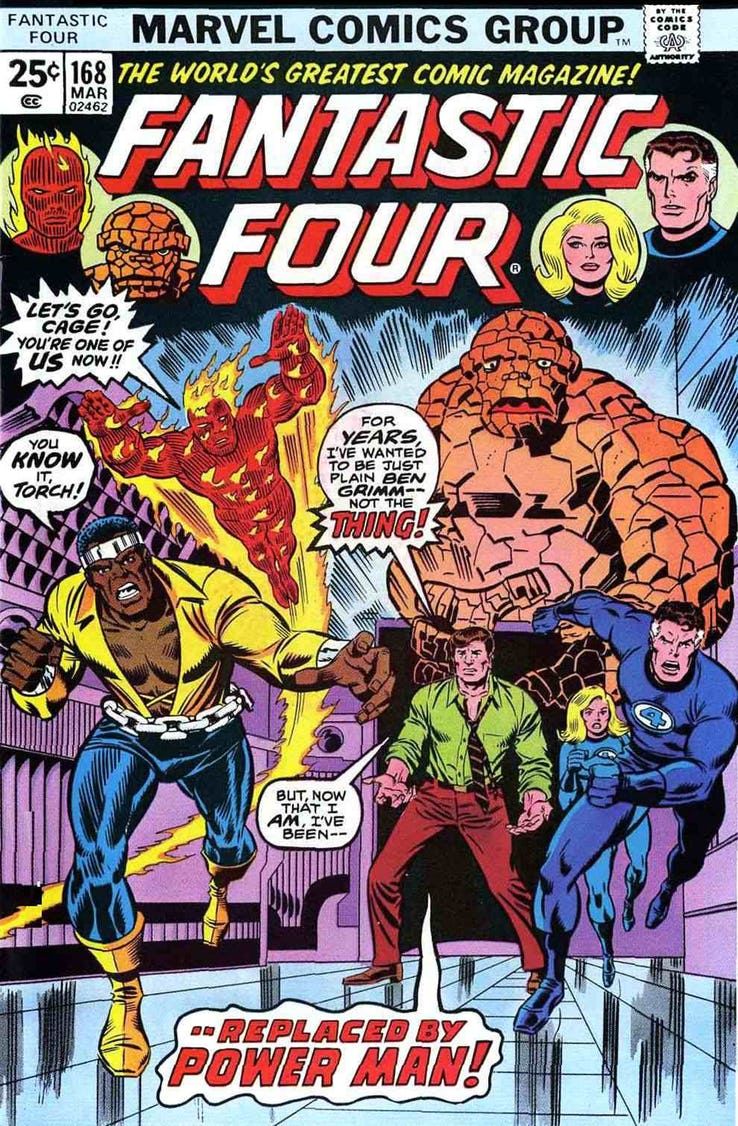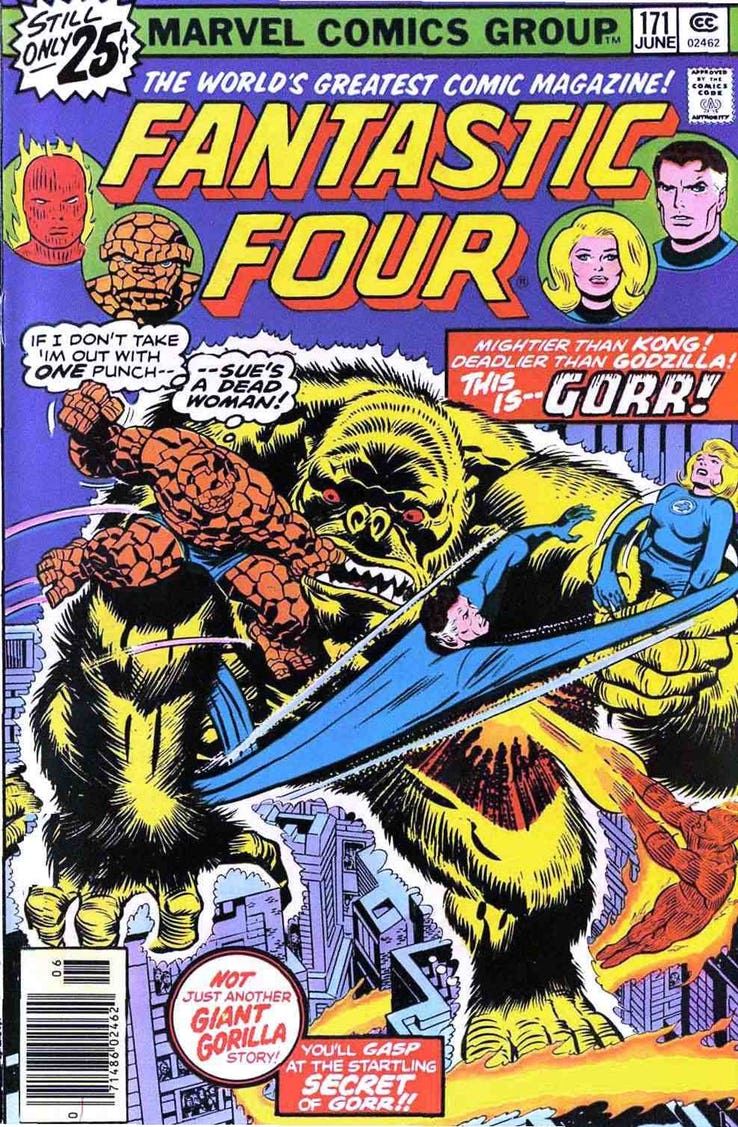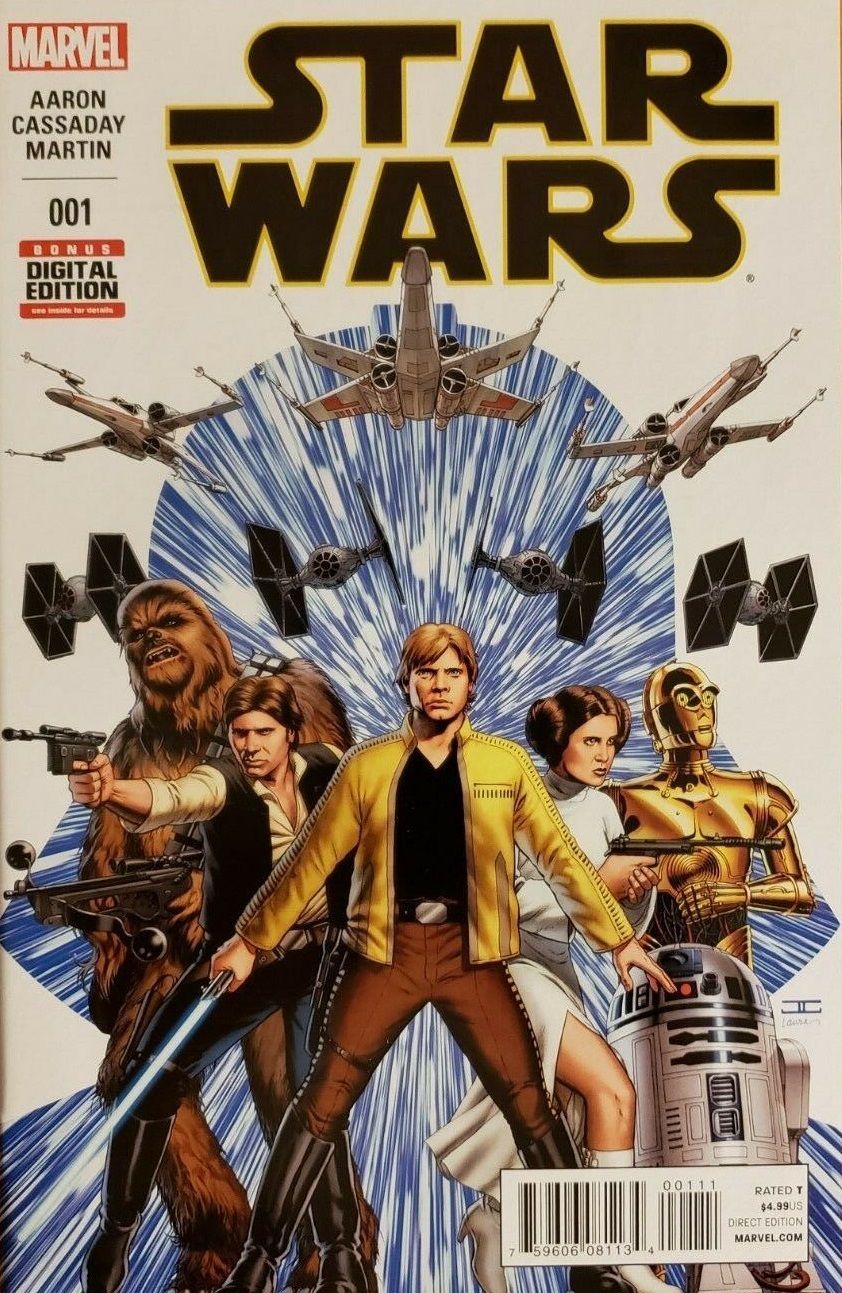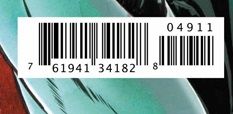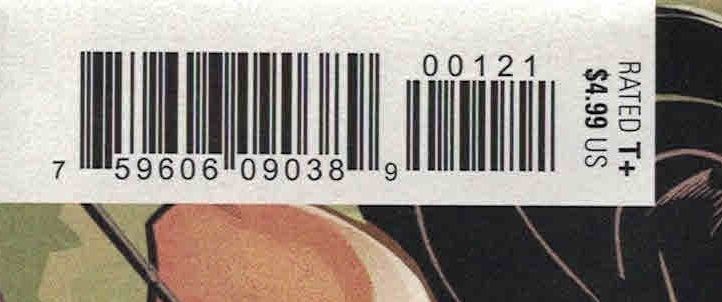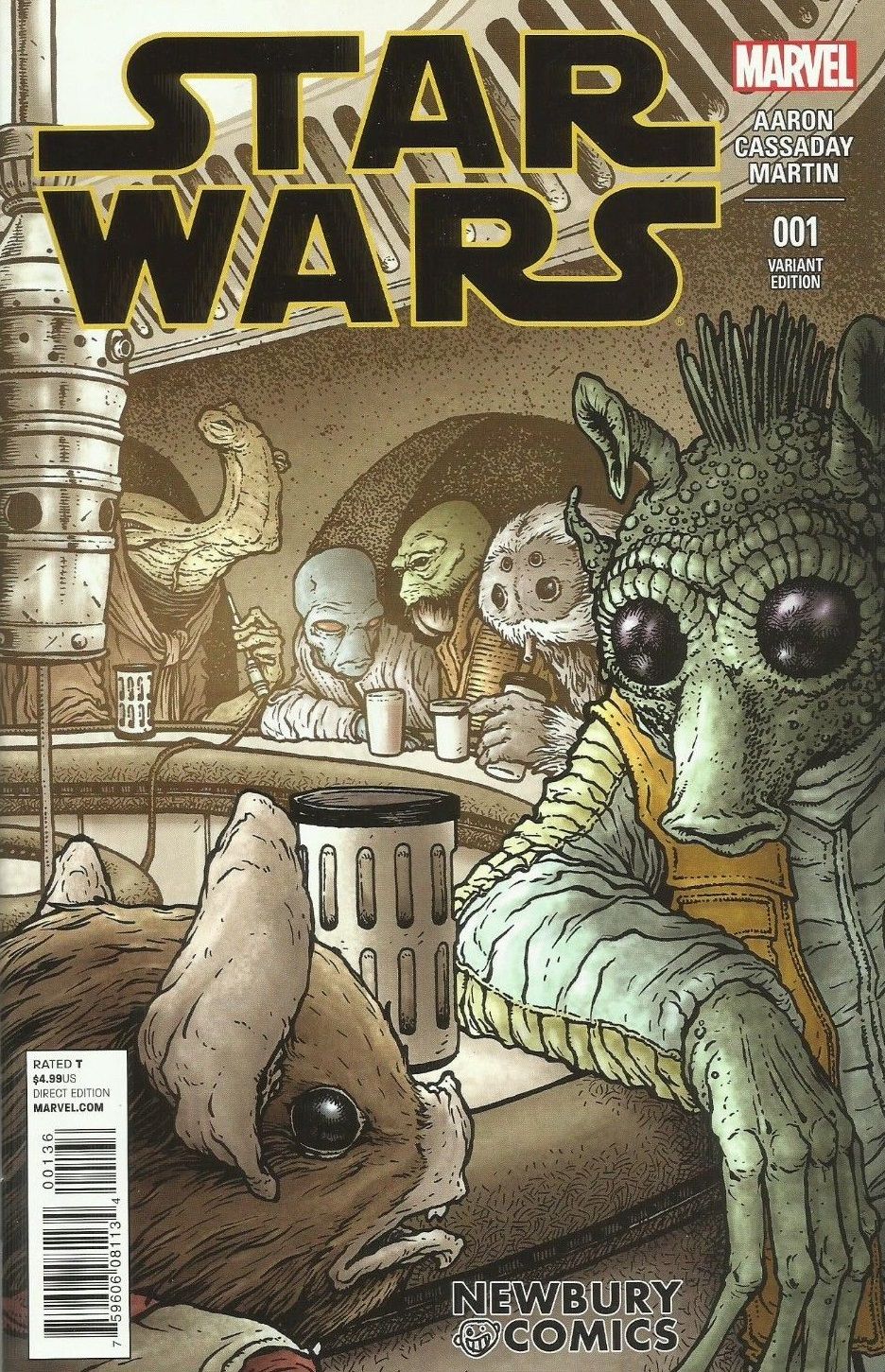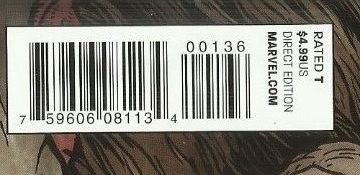Comic Book Questions Answered – where I answer whatever questions you folks might have about comic books (feel free to e-mail questions to me at brianc@cbr.com).
Reader Ben J. wrote in to ask what the deal was with the UP Code on comic book covers. What do all of those numbers mean? DO they have a meaning?
Have you ever found yourself saying "Pin number," even though the N in PIN stands for "number"? Of course you have. Everyone has. Similarly, do you know how hard it is for me to write out UP Code instead of UPC Code? Even though the C in UPC stands for Code (UPC stands for Universal Product Code). Throughout me writing this, I keep driving myself nuts writing UP Code. It just looks so dumb. That's just a little extra insight into my mind.
Before we get to the meat and potatoes of Ben's question, though, we need to take a quick refresher on the history of the UP Code on comic book covers. I wrote a whole article on this topic a couple of years ago, so I'm just going to quote noted comic book expert, Brian Cronin, on this subject. Just try to stop me!
For years, comic books were sold only on newsstands. You know, spinner racks, magazine stores, etc. The stores would return their unsold copies just the same way that they currently return unsold copies of newspapers and magazines.
This is how comics looked at the time, like "Fantastic Four" #1...
And for years, that's what comics looked like. No corner boxes on the bottom of the comic book at all.
This stayed the same all the way through the mid-1970s...
In 1974, though, the Universal Product Code (UPCs) was officially introduced. This was a way for stores to track products easily for sales by using scanners that would just scan the code and enter that price into the register (instead of the cashier manually adding in each price). Newsstands and magazine stores used these scanners, so by 1976, comic book companies had to begin adding UPCs to their books. Here's the first issue of "Fantastic Four" to have a UPC...
That was all well and good until the Direct Market began in the late 1970s. Comic book companies had to differentiate between the newsstand editions (which could be returned for credit) and the direct market editions (which could not), so they initially just had bars crossed through the UPC (as back then, very few comic book stores had UPC Scanning equipment). For years, then, direct market comics didn't have UPC on them. Eventually, though, in the 1990s (with many comic book stores now having UPC Scanning equipment), that changed.
The problem, though, is that comic book companies were all pretty much allowed to come up with their own UPCs for their comic books. That led to some confusion when scanners did not work on all of them. Finally, Diamond Comic Book Distributors insisted on every comic book company adopting the same format for their UPCs on their covers. That format was called UPC-A Supplemental 5, which simply means that it is a basic UPC plus an extra five digits that comic book companies could do with as they pleased.
We'll be using Star Wars #1, which was a super popular comic book that had the decency of having the UPC flat, to make it easier for me to use it as an example...
Page 2: [valnet-url-page page=2 paginated=0 text='Let us get into it!']
WHAT KIND OF PRODUCT IS THIS?
The first digit on a UPC tells you what category the item belongs in.
Courtesy of Computalabel International, here is what the numbers mean:
0, 1 , 6, 7 and 8 are for regular UPC codes.
2 is for random weight items, e.g. meat, marked in-store.
3 is for National Drug Code and National Health Related Items.
4 is for in-store marking of non-food items.
5 and 9 are for coupon use.
Since 0, 1, 6, 7 and 8 are just up for grabs, comic book companies have generally chosen 7 as their first digit. Not all of them, but most of them.
WHAT COMPANY MADE THIS?
The next five digits are the company code.
Marvel's company code is 59606.
DC's is 61941...
WHAT TITLE IS THIS?
The next five digits are the code used for each title. So Star Wars is 08113.
West Coast Avengers is 09038...
THE CHECK DIGIT
Thanks again to Computalabel, the "check digit" is "The UPC symbol also has a check digit which is the last digit of the code and is calculated according to the algorithm used for EAN." It's basically a test to make the scanner work.
WHAT NUMBER IS THIS?
Now we're into the supplemental numbers, the stuff that is just for comic book company usage.
The first three digits are obviously just the number of the comic book. In this case, 001...
In case you are curious, since these things did not start until well into the history of comic books, comic book titles that go over three digits can just start over from the beginning, which is what DC Comics does with Action Comics. Here is #1006...
Now, will this cause a problem in 700 issues? Yes, but, well, I'm sure everyone will just be happy if the planet is still around then. I'm sure they'll figure something out.
WHICH COVER IS THIS?
Here's a funny bit. So variants are so common nowadays that there is a whole section to tell you which cover you have. This is the main cover for Star Wars #1, so it is a 1...
The West Coast Avengers #1 cover I used is the 1:50 Terry and Rachel Dodson variant and that is considered 2...
But what about books with tons of variant covers, like, say, Star Wars #1?
In those cases, they just take over the final digit, as well. Like this Newbury Comics variant...
Is the 36th variant cover for Star Wars #1...
WHAT PRINTING IS THIS?
The final digit tells you what printing the comic book is. This one is a first printing...
Here's an Amazing Spider-Man #796 second printing...
See the 2?
There ya go, Ben!
If anyone else has a comic book question, feel free to drop me a line at brianc@cbr.com!

